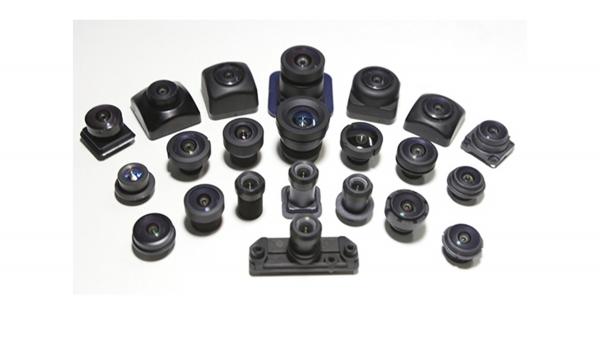The History of Automotive Lenses
(2023年)https://www.sunny-automotive.com/products/automotive-lens/
Ⅰ. Automotive Lenses Historical Development
Camera technology first appeared in the Buick Centurion concept in 1956 in the form of a rear-mounted automotive lens. After nearly 40 years of development, Toyota launched the world's first commercial vehicle Soarer with a rear lens in 1991, which became the beginning of the commercial use of automotive lenses.
After 2006, the automotive lens industry ushered in a period of rapid development. Four scholars, K.Kate, M.Suzuki, Y.Fujita, and Y.Hirama from Toshiba and other companies and institutions jointly proposed the concept of car panoramic surround view - by installing multiple wide-angle lenses around the car body to collect surrounding images to form a 360-degree panoramic view.
This concept has attracted the attention of many automakers, and several OEMs including Nissan and Fujitsu have launched related systems in the following years. At the same time, the increase in the number of automotive lenses has also enabled the car to have more functions.
Ⅱ. The Automotive Lenses are Classified According to the Installation Position
According to the different installation positions, the automotive lens as a whole can be divided into front-view lens, surround-view lens, rear-view lens, side-view lens, and built-in lens.
1. The front-view lens is mainly installed on the front windshield and can be used to assist in the realization of front-car collision avoidance warning, lane departure warning, traffic sign recognition, pedestrian collision warning and other functions.
2. The lenses for automotive surround view are mainly installed near the car logo and integrated into the left and right rear view mirrors, which is the basis for the realization of panoramic parking.
3. The rear view lens is mainly installed in the rear trunk, which can assist parking by displaying the reversing image.
4. The side view lens is mainly installed under the rear view mirror for blind spot monitoring.
5. Most of the built-in lenses are installed in the rearview mirror of the car to monitor the driver's status and realize functions such as fatigue reminders.
According to the data, in 2019-2020, the market penetration rates of rear-view lenses and front-view lenses are as high as 50% and 30%, respectively, while the market penetration rates of side-view lenses and built-in lenses are relatively low, at 22% and 7%, respectively.
In recent years, the development of smart cars has given car cameras more functions than safety.
At present, the lens of some smart cars can complete identity authentication through face recognition to unlock the vehicle and start, face payment, seat adjustment and other functions. With the development of smart cockpits, car cameras can also provide personalized services for the preferences of drivers in the car through face recognition and gesture recognition.
The emergence of new car-making forces has added social functions to car cameras.
After decades of development, today's segments of the automobile lens industry have formed a relatively stable market pattern. The automotive lens manufacturers are mainly concentrated in China, Japan, and Korea now.
Sunny Automotive is committed to providing optical solution for autonomous and intelligent driving. The company is also the world's largest automotive lens provider with outstanding quality,and automotive lens market share has already reached world Top1 for ten years. At present, the company has established long-term cooperation with many of the world's top auto parts suppliers, with customers throughout Europe, America, Japan, South Korea and China. The product line is rich, and many products have been successfully applied to BMW, Mercedes, Audi, Ford and many other international famous brands.

- «前のできごと |
- 次のできごと»
- このできごとのURL:


コメント